Imonbukuro
(Comfort bags)
An imonbukuro,
or “comfort bag”, what we would now call a “care package”, was used to send
small gifts to the troops. Hewitt (p. 261) indicates such items included “tins of
crabmeat, razors, blank postcards, sake and cigarettes”, etc.
This first one is about 23cm by 30cm (9” X 12”)
and has three big characters that say i-mon-hin,
“comfort articles”. There is a close-up below of the
identification information in the lower left. Part of the cloth drawstring
seems to have been replaced by a length of modern shoelace.

The back just has a few katakana phonetic
symbols in the upper left corner (see close-up below).

Here is the close-up of the
identification information in the lower left corner of the front. The right
column is headed ju-sho (address) and
the left column, shi-mei (name). The
address starts Tokyo-shi (Tokyo
city), Shiro-something-bashi-ku
(Shiro-?-bashi ward—there is a character that looks like it was left out and
then squeezed in afterwards, making it almost illegible), Ko-something-machi (ko-? town), and then possibly a number. The
name in the right column also starts out easy and then becomes harder. The
surname seems to be Nagazawa, and the
given name, something-ichiro. Then
there is the character for commerce, sho,
and another one I’m not sure of. The two
red stamps are made by a hanko, or
name stamp, which the Japanese use instead of signatures for many purposes,
like giving approval. Both of these appear to be the same, Okano. The upper one is quite faint so Mr. Okano may have
re-stamped it to make sure it was legible. Perhaps these stamps indicated that
the contents had passed inspection.
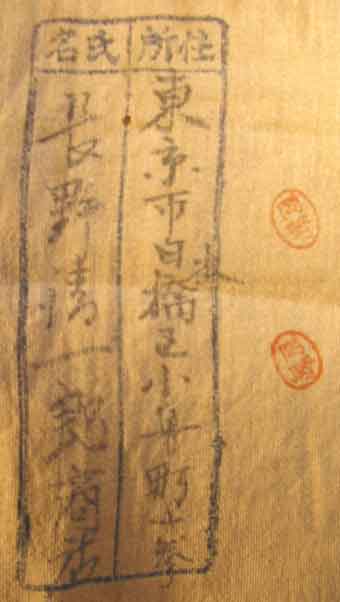
These are the katakana characters on
the back. The first three say Okatsu,
probably a last name, while the last one is actually a kanji three. It is also
used in several given names, so I am guessing this was the sender’s name.

The bag above looked rather
austere, but comfort bags were private purchase items, so some makers tried to
increase sales by making their bags a little special. Here is one made of hemp
that says imonbukuro, comfort bag,
across the top (right to left) and shows a scene of a
woman holding up some sweet potatoes she has for sale. These are a traditional
treat in

The back is very plain, but shows
one thing that made this acquisition special for me: it still has the original
price tags, shown in close-up below.

If we zoom in on these tags, there
is a lot of information about who made the bag, etc. I will translate the whole
thing as soon as I can get to it, but for now I’ll just mention that the
official price was 34 sen, or about one-third of a yen, and it was made in
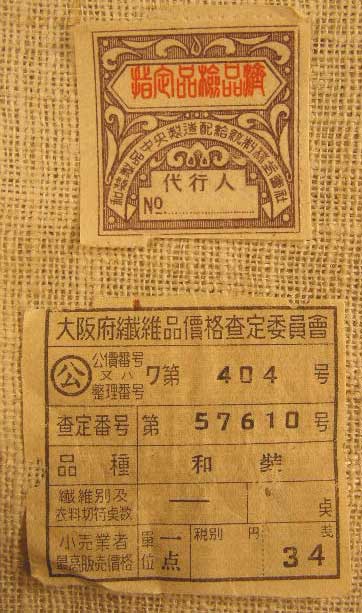
Here is another “fancy” bag. The three
characters across the top read from right to left and say i-mon-bukuro, or “comfort bag”. The scene on the bag shows a small
boy adding a stitch to a senninbari.
The two-column caption to the right of the tree says Mon-chan no sen-nin-bari, or “Little Mon’s thousand stitch belt”.
The woman is wearing a traditional Japanese coverall/apron for housework or
cooking called a kappogi. The
character in the small circle in the lower left is toku (special), and the column of two characters to the lower right
of the tree says Ryu-hei, a name
(probably that of the artist). The bag is made out of a fairly stiff, shiny
material, possibly synthetic, and measures about 8.75” X 12.75” (22cm X 33cm).

This bag looks used but is not marked with any
name. It is made of fairly coarse material, perhaps hemp. The red characters at
the top say i-mon-bukuro, “comfort
bag”. The two children are wearing school uniforms (even today elementary
school uniforms for boys look quite military). The boy has a toy airplane. I am
not sure whether the girl has a flower or a pinwheel in her right hand, but by
the way she is holding it I suspect it is a pinwheel. The bag in her left hand
says bu-un-cho-kyu, the ubiquitous
wartime Japanese slogan “eternal good luck in war”.
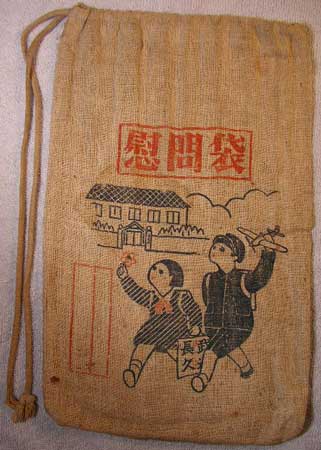
The back is unmarked except for a couple of
small stains.
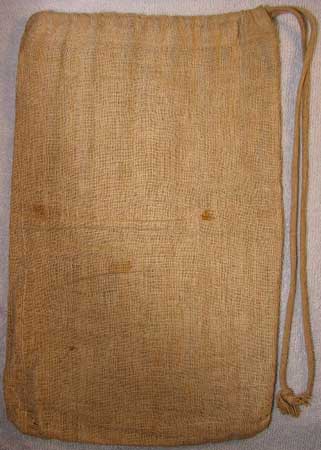
Here’s another one with a school
connection. It seems to have been a national effort to provide these comfort
bags to soldiers. I have read of the local chapter of the Dai Nippon Kokubo Fujinkai (Geater Japan National Defense Women’s
Association) spearheading the preparation and sending of bags. Schoolchildren
also seem to have been part of the effort. The characters on the front read
from right to left. The two on the top say ko-gun,
or “Imperial Army”. The four across the bottom are the ubiquitous wartime slogan bu-un-cho-kyu, “eternal good luck
in war”. The red circle is, of course, the hinomaru,
or sun, from

The characters on the back are read
in columns, starting on the right. The first column on the right has two
characters: i-mon, or “comfort”. The
middle column has six characters: hyo-go-ken-take-kura-gun,
or “
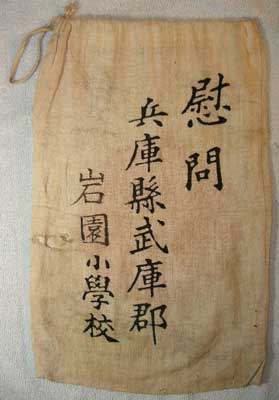
I bought some old Japanese photo
magazines recently and came across this article in the July 29, 1942 edition of
Shashin Shuho (“Weekly Photo News”).
It is entitled imonbukuro de yukata mo
juban mo, “
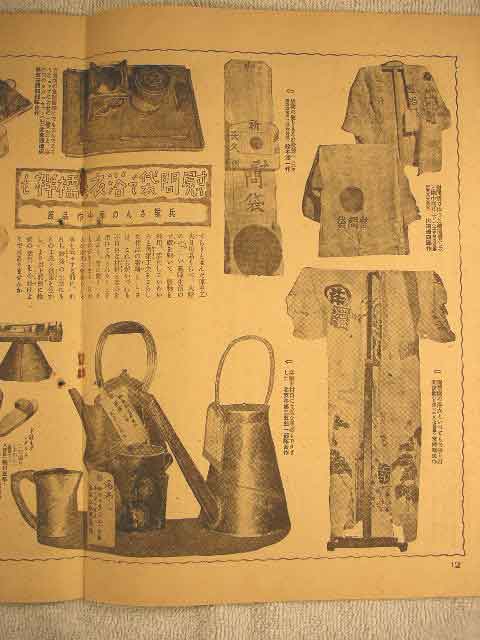
This photo shows soldiers in a sod
shelter near the border between Japanese-controlled Manchuria (then called
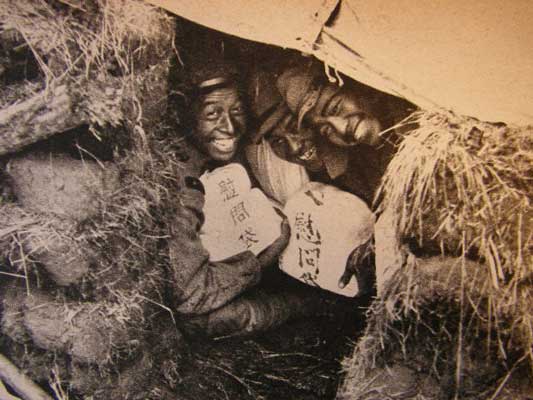
Click here to go back to the Japanese Military
Bags page: Teri's Japanese Handgun Website: Japanese Military Bags
Click here to go back to the Other Militaria
page: Teri's Japanese
Handgun Website: Other Japanese Militaria
Click here to go back to the main page: Teri’s Japanese Handgun Website
Last updated: November 6, 2004. All contents are copyright Teri unless otherwise specified and may not
be used elsewhere in any form without prior permission.